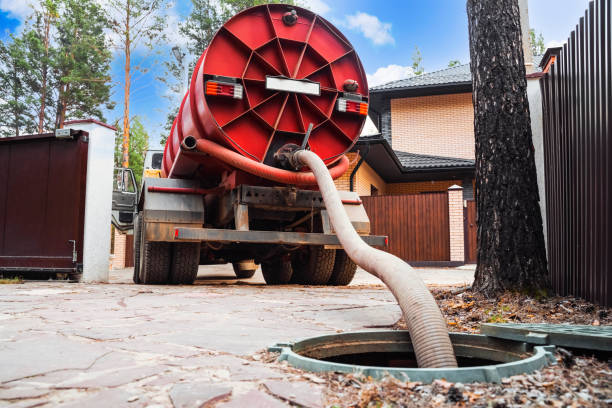Sump pumps play a crucial role in protecting homes from water damage by efficiently removing excess water from basements or crawl spaces. Whether you're experiencing frequent flooding or preparing for the rainy season, installing a sump pump can provide peace of mind and safeguard your property. In this comprehensive guide, we'll walk you through the step-by-step process of Sump Pump Installation, from initial preparations to final testing.
Assessing Your Needs:
Before diving into the installation process, it's essential to assess your specific requirements. Consider factors such as the size of your basement or crawl space, the frequency of water accumulation, and the severity of potential flooding. This evaluation will help you determine the type and capacity of the sump pump needed for your property.
Gathering Materials and Tools:
Once you've determined the appropriate sump pump for your needs, gather all the necessary materials and tools for the installation. These typically include:
- Sump pump (submersible or pedestal)
- Sump pit
- PVC pipes and fittings
- Check valve
- Gravel or stone
- Electrical wiring and conduit
- Pipe wrench
- Screwdriver
- Tape measure
- Hacksaw
- Level
- Safety goggles and gloves
Having all the required materials on hand will streamline the installation process and minimize interruptions.
Choosing the Installation Location:
Selecting the right location for your sump pump is crucial for optimal performance. Ideally, place the sump pit in the lowest part of the basement or crawl space where water tends to accumulate. Ensure there's ample space around the pit for easy access and maintenance.
Digging the Sump Pit:
With the installation location determined, it's time to dig the sump pit. Use a shovel or a mechanical digger to excavate a hole large enough to accommodate the sump pit. The pit should be deep enough to allow proper drainage and prevent water from overflowing.
Installing the Sump Pump:
Once the pit is dug, place the sump pump inside, ensuring it sits level on the bottom. If you're using a submersible pump, position it within the pit, making sure the float switch moves freely and doesn't get stuck on the walls. For pedestal pumps, the motor should be positioned above the pit, with the pump lowered into the water.
Connecting the Discharge Pipe:
Next, connect the discharge pipe to the outlet port of the sump pump. Use PVC pipes and fittings to extend the pipe from the pump to the exterior of your home. Be sure to include a check valve in the discharge line to prevent water from flowing back into the sump pit after the pump shuts off.
Backfilling and Securing the Pump:
After the discharge pipe is in place, backfill the area around the sump pit with gravel or stone to provide stability and promote proper drainage. Ensure the pump is securely anchored in the pit to prevent movement during operation and also known sump pump installation price.
Wiring the Sump Pump:
If your sump pump requires electrical power, carefully wire it according to the manufacturer's instructions. Use a dedicated GFCI-protected outlet for safety and compliance with building codes. If you're not comfortable working with electrical wiring, consider hiring a licensed electrician to complete this step.
Testing the System:
Once the installation is complete, it's essential to test the sump pump to ensure proper functionality. Fill the sump pit with water manually or wait for natural water accumulation, then observe the pump as it activates and pumps water out of the pit. Verify that the discharge pipe directs water away from your home's foundation to a safe drainage area.
Regular Maintenance:
To keep your sump pump in optimal condition, establish a routine maintenance schedule. This may include inspecting the pump and discharge pipe for debris, testing the float switch for proper operation, and cleaning or replacing the pump as needed. Additionally, consider installing a backup sump pump or generator to ensure continued operation during power outages.
Conclusion:
Installing a sump pump is a proactive measure to protect your home from water damage and flooding. By following this step-by-step guide, you can confidently install a crawl space sump pump installation system tailored to your property's needs. Remember to prioritize safety throughout the installation process and perform regular maintenance to keep your sump pump operating efficiently for years to come.





Comments